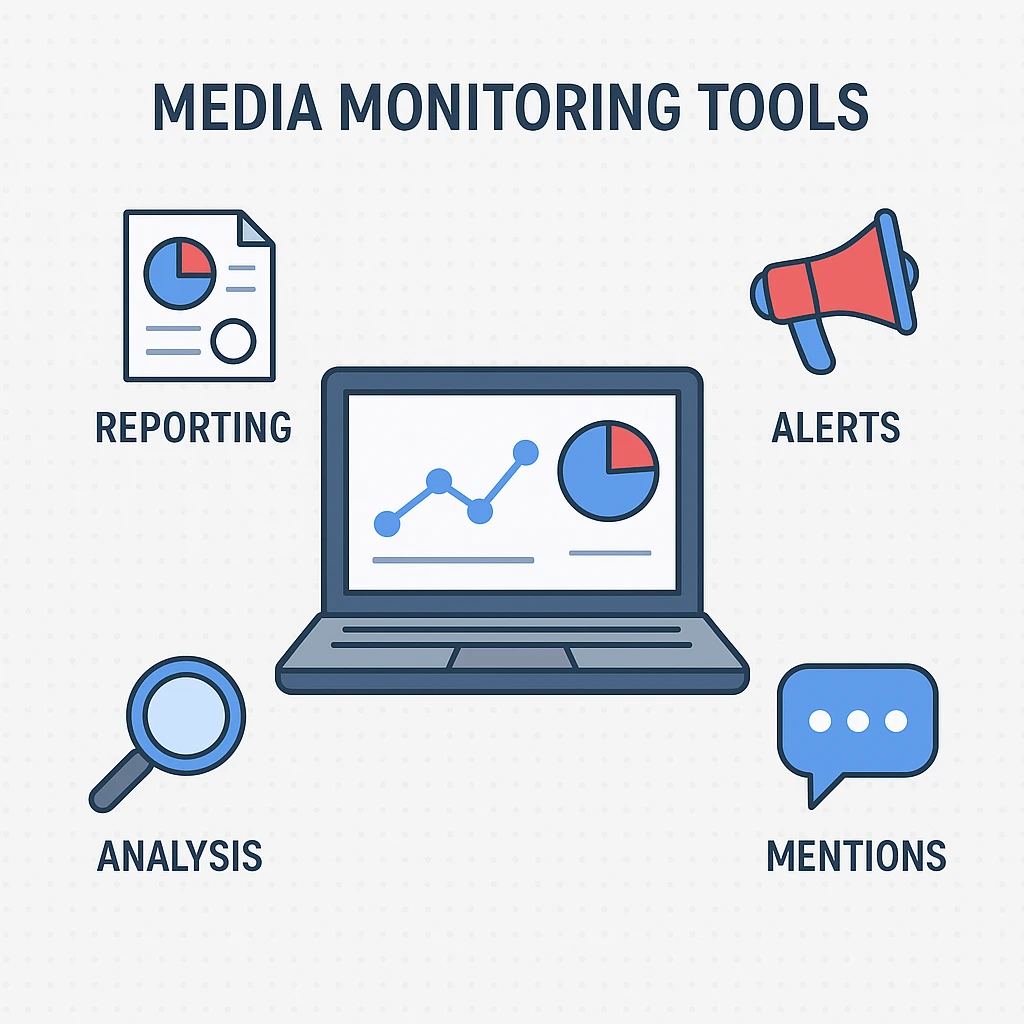The Future of Media Monitoring Tools in 2025: AI, Automation, and Accuracy

Nowadays conversations happen everywhere, on social media, news sites, podcasts, television, and blogs. For businesses, staying ahead of these conversations is no longer optional, it’s essential. This is where media monitoring tools are evolving fast, powered by artificial intelligence (AI), automation, and a growing demand for accuracy.
The future of media monitoring isn’t just about tracking mentions. It’s about turning raw data into actionable intelligence that can guide real-time decisions.
History of Media Monitoring
In the past, media monitoring meant cutting newspapers, scanning magazines, or watching TV shows manually. While useful, it was slow and incomplete.
With the rise of digital channels, companies needed faster ways to track, analyze, and respond to information in real time. This demand gave birth to advanced monitoring services powered by algorithms and automation.
Today, organizations want more than just “what is being said.” They want to know:
- Why it is being said
- How it impacts their brand
- What actions to take
This is where AI and automation transform monitoring into media intelligence.

How AI is Changing Media Monitoring
Artificial intelligence is reshaping media monitoring tools in several powerful ways:
- Natural Language Processing (NLP): AI can read tone, mood, and context in content, helping companies understand whether a mention is positive, negative, or neutral.
- Image and Video Recognition: Monitoring is no longer just about text. AI can detect logos, products, or competitors inside online photos and videos.
- Predictive Insights: AI can forecast potential crises or upcoming trends before they fully unfold, giving businesses time to act early.
These innovations make real-time media monitoring more effective, allowing companies to respond quickly and strategically.
Automation for Speed and Efficiency
Automation eliminates the time lost in manual tracking. With automation:
- Thousands of articles, posts, and broadcasts can be scanned in seconds.
- Information across different channels is collected and analyzed automatically.
- Customized alerts and notifications give real-time updates so teams can act immediately.
This is especially critical for global brands that deal with high volumes of content every day.
Accuracy in the Age of Information Overload
In today’s world of misinformation and fake news, accuracy matters more than ever. Modern media monitoring systems use AI to:
- Separate credible sources from noise
- Provide context-based insights rather than just raw numbers
For example, instead of simply reporting that your brand was mentioned 1,000 times, modern tools highlight:
- Which mentions are most engaging
- Which came from authoritative sources
- Which could harm your reputation if ignored
The Role of Real-Time Media Monitoring
Speed is a defining feature of next-generation monitoring tools. Real-time media monitoring helps businesses see opportunities and threats as they happen.
- A viral customer complaint
- Breaking industry news
- A competitor’s sudden announcement
Immediate awareness allows companies to respond before small issues grow into crises. In competitive industries, this quick reaction can be the difference between leading the conversation or struggling to catch up.
Media Intelligence: Turning Data into Strategy
The real future of monitoring lies in media intelligence. This means going beyond collecting mentions to uncover:
- Patterns in audience behavior
- Risks that may damage brand reputation
- Opportunities for PR, marketing, or customer engagement
At the intersection of AI and automation, businesses can transform unstructured data into smart strategies that drive growth and customer trust.
The Future of Business with Media Monitoring
As monitoring tools evolve, companies must rethink how they use these technologies. Key trends include:
- Integration with Business Systems: Media monitoring will connect seamlessly with CRM, marketing automation, and customer service platforms.
- Customization and Personalization: Businesses will demand monitoring to their industry, language, and goals, rather than generic filters.
- Ethical AI Usage: Transparency and fairness in AI-driven insights will become vital, especially when decisions affecting reputation are based on these tools.
Also Read: Strategies for Effective Business Marketing on Social Media
Conclusion
The future of media monitoring tools lies at the crossroads of AI, automation, and accuracy. Companies can no longer treat monitoring as a passive task, it must be an active, intelligent process that drives decision-making.
With advanced tools, businesses can convert endless streams of data into actionable media intelligence, using real-time insights and next-generation monitoring platforms to stay competitive in 2025 and beyond.
FAQs
1. What is media monitoring?
Media monitoring is the process of tracking mentions of a brand, product, or topic across online and offline platforms like social media, news, blogs, and TV.
2. What makes AI important in media monitoring?
AI helps detect tone, mood, and patterns in data, offering deeper insights beyond just numbers. It also enables predictive analysis and image/video recognition.
3. Why is real-time media monitoring valuable?
Real-time monitoring allows companies to react instantly to crises, customer complaints, or new opportunities, preventing damage and improving brand trust.
4. How accurate are AI-powered monitoring tools?
Modern AI systems can filter noise, verify credible sources, and highlight the most meaningful mentions, making results more accurate than manual methods.
5. What trends will shape the future of media monitoring?
Integration with CRM, personalized monitoring, and ethical use of AI are key trends shaping the next generation of media monitoring tools.

Similar Posts
Elevating Cyber Security Consulting Services: Strategies for Enhancement
Unblocked Games 911 Features and Powerful Analysis
Practical Study Tips for High School Students Using AI